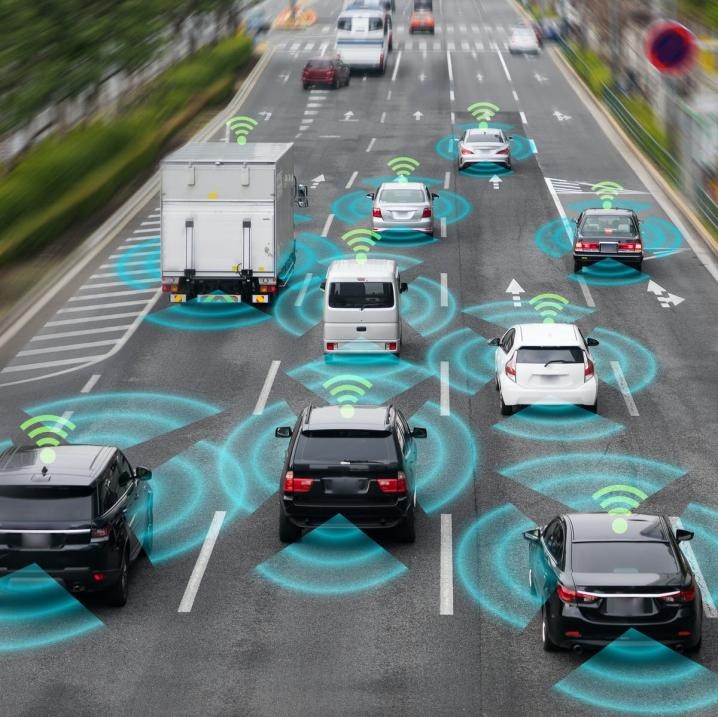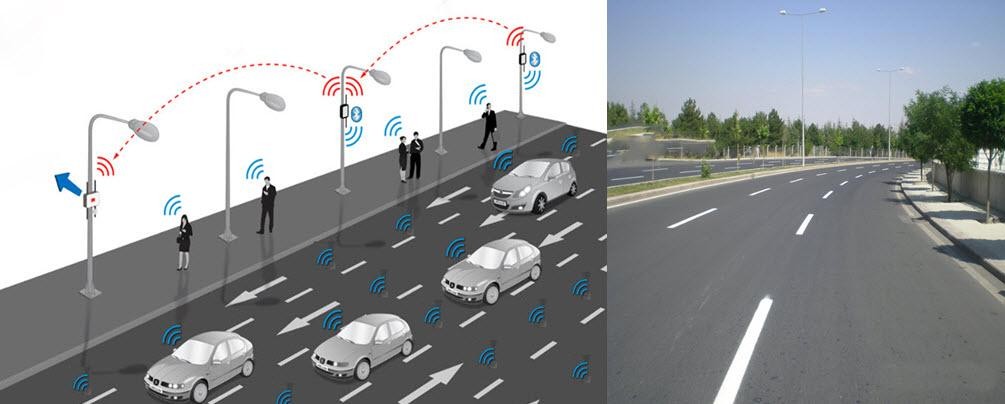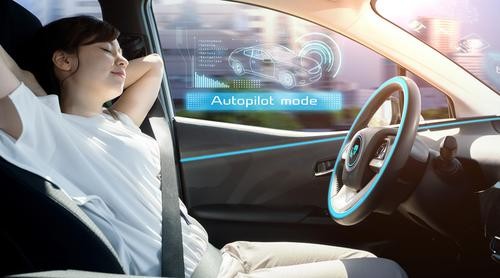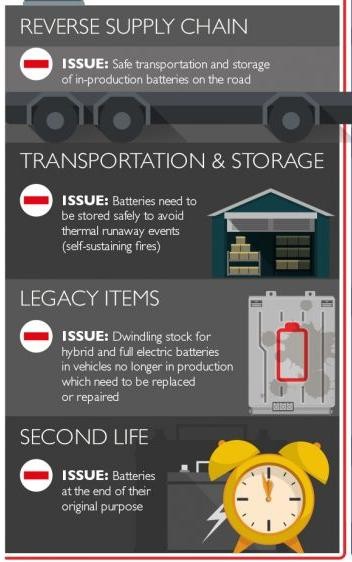Chapter 6
Autonomous Vehicles- Intelligent Transport System

An Intelligent Transport System (ITS) is an innovation, application, or stage that improves the nature of transportation or accomplishes different results dependent on applications that screen, oversee or upgrade transportation systems.
Intelligent Transportation Systems (ITS) advances advanced transportation security and portability and upgrade efficiency by incorporating progressed correspondence innovations into the transportation system and vehicles. The Intelligent Transport System includes an expansive scope of remote and customary correspondences-based data and electronic innovations.
Intelligent Transportation System depends intensely on information and its screening. When the system is worked to gather information and break down it, the outcomes are then used to control, oversee and plan transportation. Sensors take on a significant part in information assortment.
The Technology behind the Value
It's not, at this point enough to simply "look in the engine" to find how the present refined and autonomous vehicles work. The innovation behind central automotive vehicles or CAVs stretches out a long way past the actual vehicle. Vehicle sensors create gigantic measures of information. This information, along with the associated information from different sources, requires a solid fast registering stage and powerful, AI-created calculations for the productive activity of associated self- governing vehicles.
Hitachi has created cutting-edge detecting and regulator advancements, AI-based, helpful associated control calculations, just as the arrangements that empower sending of the AI calculations, both in the cloud and nervous handling stages. For instance, a high-velocity independent driving electronic control unit (ECU) empowers the handling and investigation of information from numerous sensors continuously for self-governing driving/progressed driver helps systems (AD/ADAS). Also, the predictive support and maintenance total sensor information and utilize a mix of physical science and AI-based models to give continuous expectations and suggestions for vehicle maintenance.
Innovation organizations attempting to give such environments should not just have a broad interest in innovative work; they should have a strong establishing in operational technology (OT) just as IT. Creating solutions and innovations that meet the requirements of car grade quality and large-scale manufacturing scale are the greatest difficulties confronting these organizations. Hitachi is one of only a handful few organizations on the planet with space ability across the numerous features of smart urban communities, and we have unrivaled OT and IT experience. We can give a total start to finish advanced versatility answer for brilliant urban communities and gigantic networks across numerous spaces.
Smart urban communities are a brilliant illustration of the worth of associated innovation to enable and improve society at all levels, with associated self-ruling vehicles contributing essentially to that worth.
Will self-driving vehicles accomplish advantageous interaction with smart urban communities?
As vehicles are getting more self-sufficient, urban communities are also getting smart by utilizing more sensors and instruments. To drive this insight forward, smart city IT infrastructure should have the option to catch, store, shield, and investigate information from self-governing vehicles.
Also, self-sufficient vehicles could extraordinarily improve their presentation by incorporating information from smart urban communities. While planning the smart cities partners should consider how they will empower the sharing of information in the two ways, to and from self-governing vehicles, and how that information can be examined and followed up on continuously, so traffic continues to move and drivers, travelers and people on foot are remains careful.
This implies that a city needs actual infrastructure to deal with the developing numbers of self-sufficient vehicles that will be in the city and an IT foundation that can without much of a stretch oversee information stockpiling, execution, security, strength, preparation, and insurance from a central administration reassure.
Roadside sensors for smart cities
There's a case to be made that urban areas should already be building networks for smart sensors.
These would have the capacity to measure traffic conditions and conceivably even screen problems like fallen trees, car accidents, or heavy snowfall.
Completely independent vehicles (and surprisingly present-day GPS networks) would have the option to ingest this information and settle on smart steering choices, arranging courses that would stay away from deterrents, from static and solid sources.

Self-governing vehicles could essentially get estimations about traffic examples and courses utilizing information from different vehicles information as a little bundle from roadside sensors, maybe a large portion of a mile as it were they are going along.
The other way, information from the vehicle, sent to the sensor, could be sent directly to a server center for long-term study. This would free up valuable GPU assets installed self-sufficient vehicles, leaving seriously handling data transfer capacity for strategic, constant reaction exercises like impact evasion.
In certain occurrences, this information could be in real sense lifesaving. Self- governing vehicle testing was generally required to be postponed as of late after a person on foot was murdered when a self-driving Uber vehicle neglected to distinguish her as she was going across the road.
Urban areas could utilize their sensor organization to screen walkers continuously. Vehicles could utilize this information to begin easing back down naturally when people on foot are going across the street ahead, before LiDAR (light identification and ranging) even recognizes them.
Advantages to urban cities
Similarly, urban areas could extraordinarily profit by ingesting and examining information from self-governing vehicles.
Every self-driving vehicle is a flight information recorder for streets, recording each stoppage, each slowdown, each knock, and each close by vehicle. Urban communities could utilize this data to do extraordinary things:
- Cities could take advantage of LiDAR information to get a total guide of their streets — including each pothole and bumps on the road. This would help them save money by sending their divisions of public works more effectively, triaging the most exceedingly terrible and most critical harm.
- Self-driving vehicles could also replace the traffic cameras, particularly while we exist in a half and half universe of self-governing and human-controlled vehicles. By recording vehicles, self-driving vehicles will unavoidably get on speeders and wild drivers. By sharing this information, they would permit urban areas to relieve these drivers and even produce income through speeding tickets. It may not be famous, yet it would improve security.
- Many self-driving vehicles will work on a taxi model, staying in consistent flow by getting and dropping off travelers. Since these vehicles infrequently need to leave, urban areas could animate monetary advancement by destroying a specific number of their parking structures and re-drafting them as business or private structures.
By utilizing self-driving vehicles as versatile instrumentation groups, urban communities could accumulate data that could save lives, improve personal satisfaction and even drive financial turn of events. Nonetheless, once more, this is quite difficult and there are a few complexities in the way.
Information dividing among self-driving vehicles and smart urban cities

To start each would profit but there is no obvious operational norm at present for urban cities and vehicles to share information.
The road for this information sharing to occur would be set by administrative offices like the National Transportation Safety Board (NTSB)
However, the current organization has adopted a free enterprise strategy. To accomplish information sharing, urban areas may have to move toward self-driving vehicle makers and administrators separately.
Second, smart cities are not the slightest bit arranged for the volume and intricacy of information that self-driving vehicles will create. During a normal day, every self- driving vehicle may deliver multiple terabytes of information. There is no functional path exists for urban communities to send, store, and investigate this information presently.
Here, smart cities can solve two problems at once. By putting resources into the system expected to help self-driving vehicles, urban areas can set themselves in a place to arrange access for the information they produce. One of the significant perceptions of IoT is the capacity to adapt information, particularly in a smart city to reinvest those assets in local upgrades.
It has been held for some time that brilliant urban areas ought to sensibly be working under the reason of smart locales.
Specifically, this means assisting with making the organization of little cell 5G transmitters that will uphold self-driving vehicles close by the edge registering assets that will help these vehicles settle on basic choices from a unified server center. However, this may appear to be a costly venture, many smart urban cities are willing to do this now.
These worries around information sharing and organization creation again bring up the issue of what type of foundation is expected to help these abilities as the two of them come on the internet and as they increase. These discussions are simply hypothetical, yet the need to plan for them isn't.
Self-governing vehicles are coming; the rest is simply subtleties. Urban areas that need to capitalize on these smart patterns should put today in the system that gives them the adaptability to follow any place those patterns go if they need to be steering the ship.
Independent versus Automated versus Self-Driving: What's the distinction?
The SAE utilizes the term automated rather than self-ruling. One explanation is that the word independence has suggestions past the electromechanical. A completely self-ruling vehicle would act naturally mindful and equipped for settling on its own decisions. For instance, you say "drive me to work" but the vehicle chooses to take you to the seashore all things being equal. A completely automated vehicle, in any case, would follow orders and afterward drive itself.
The term self-driving is frequently utilized conversely with independent. Along with that, it's a marginally extraordinary thing. A self-driving vehicle can drive itself in all circumstances, yet a human traveler should consistently be available and prepared to take control. Self-driving vehicles would fall under Level 3 (restrictive driving automation) or Level 4 (high driving automation). They are liable to geofencing, not like a completely independent Level 5 vehicle that could go anyplace.
How do independent vehicles function?
Autonomous vehicles depend on sensors, actuators, complex calculations, AI networks, and incredible processors to execute programming.
Autonomous vehicles make and keep a guide of their environmental factors dependent on a variety of sensors arranged in various pieces of the vehicle. The radar sensors check and measure the situation of all nearby vehicles. Camcorders recognize traffic signals, read street signs, track different vehicles, and search for walkers. Lidar (light identification and running) sensors bob beats of light off the vehicle's environmental factors to quantify distances, distinguish street edges, and recognize path markings. Ultrasonic sensors in the wheels identify controls and different vehicles when leaving.
The smart software measures this tangible info plots away, and sends guidelines to the vehicle's actuators, which control speed increase, slowing down, and directing. Hard-coded rules, obstruction evasion calculations, prescient displaying, and item acknowledgment assist the product with keeping traffic controls and explore hindrances.
How Intelligent Transportation System Works?
1. ITS consolidating technologies
The specialized center of insightful intelligent systems (ITS) is the utilization of data and control technologies to transportation system tasks. These innovations incorporate correspondences, programmed control, and PC equipment and programming. The transformation of these transportation advances requires information from many designing majors for common, electrical, mechanical, and modern and their connected controls. A greater part of transportation issues is brought about by the absence of convenient and precise data and from the absence of proper coordination of people in the network. In this way, the positive commitment of data innovation is to offer better data to help individuals associated with the network to settle on synergistic choices.
2. ITS Enabling Technologies
There is a scope of data and interchanges advances that empowers the improvement of ITS. For example, fiber optics, CD-ROM, electromagnetic compasses, GPS, laser sensors, advanced guide information bases, and show innovations. Empowering advancements can be separated into a few classes which include:
Information Acquisition
It is feasible to screen deals utilizing a few methods like inductive circle indicators, traffic sensors. Examples of traffic sensors are ultrasonic and radar, video image detector (VID), and Visual pictures from closed-circuit TV (CCTV) which gives live pictures to help the traffic community administrator screen convoluted traffic circumstances and settles on reasonable choices.
Information Processing
Data gathered at the data management place needed to be prepared, checked, and combined into an organization that helpful for the administrators. This should be possible utilizing information combination measures. Added to that, Automatic Incident Detection (AID) may also be utilized for information handling. A global positioning system (GPS) can be utilized on the vehicle side to handle information.
Information Communications
A few different ways can be utilized to pass on messages for instance wireline or remote, Fiber optics, electronic toll collection (ETC), commercial vehicle operation (CVO), parking management, signal appropriation, in-vehicle marking, in-vehicle explorer data, and reference point based course direction frameworks. A portion of these information correspondence advances is utilized by the data management place though others utilized from the vehicle side.
Information Distribution
Traffic-related data can be disseminated in different manners to improve transportation effectiveness, security, and natural quality. For instance, phones, radio, TV, work stations, fax machines and variable message signs (VMS), vehicle radios, cell phones, PCs hand-held advanced gadgets.
Data Utilization
This includes slope metering to control the progression of vehicles proceeding onto an interstate, and co-appointment of traffic light inside enormous metropolitan regions happens in the traffic management community. Along with the powerful course direction which allows the client to settle on essential choices on a moment- by-minute premise, and versatile journey control which permits the driver to consequently decrease vehicle speed to keep protected progress from the vehicle in front.
What are the difficulties with self-sufficient vehicles?
Completely self-ruling (Level 5) vehicles are going through testing in a few pockets of the world; however none are yet accessible to the overall population. We're still years from that. The difficulties range from the innovative and administrative to the natural and philosophical. We have been able to figure out only a few possibilities. There is still a lot to uncover.
Lidar and Radar
Lidar is costly and attempting to find some balance between reach and goal. If the various self-ruling vehicles were to drive on a similar street, would their lidar signals meddle with each other?
Furthermore, if numerous radio frequencies are accessible, will the recurrence run be sufficient to help large-scale manufacturing of self-ruling vehicles?
Climate Conditions

What happens when a self-governing vehicle drives in high precipitation? If there's a layer of snow out, road dividers disappear. How might the cameras and sensors track path markings if the markings are darkened by water, oil, ice, or garbage?
Traffic Conditions and Laws
Will independent vehicles experience difficulty in tunnels or on bridges? How do they perform packed in rush hour gridlock? Will independent vehicles be consigned to a particular path? Will they be conceded carpool path access? What's more, what might be said about the armada of heritage vehicles sharing the streets for the following 20 or 30 years?
State versus Central Government Regulation
The administrative interaction has as of late moved from government direction to state-by-state commands for self-governing vehicles. A few states have even proposed a for every mile charge on self-sufficient vehicles to forestall the rise of "zombie vehicles" cruising all over without travelers. Legislators have also composed bills suggesting that all self-ruling vehicles should be zero-emanation vehicles and have an emergency signal introduced. In any case, are the laws going to be not quite the same as state to state? Can you cross state lines with a self- sufficient vehicle?
Accident Liability
Who is obligated for accidents brought about by a self-sufficient vehicle? Is it the manufacturer? Is it the traveler? The most recent outlines propose that a completely self-governing Level 5 vehicle won't have a dashboard or a directing wheel, so a human traveler would not have the choice to assume responsibility for the vehicle in a crisis.
Artificial versus emotional Intelligence
Human drivers depend on unobtrusive signals and non-verbal correspondence—like visually connecting with people on foot or reading the looks and non-verbal communication of different drivers—to settle on split-second decisions and foresee practices. Can self-governing vehicles repeat this association? Will they have similar life-saving impulses as human drivers?
The Autonomous Vehicle Infrastructure
We wouldn't have the option to go completely self-sufficient without the correct system. We can't simply shift to self-driving vehicles. The shift will also require upgraded producing measures and a new variety of supply chains. Above all, the system should be ready for it. When all that is prepared, we'll begin seeing self- governing vehicles on metropolitan roads.
We're going closer to when versatility opportunity will at long last be accessible to everybody. To quantify that, KPMG has made an Automotive Vehicle Readiness Index, which shows how prepared various nations are for self-governing driving. As indicated by their exploration, the nation that is generally ready for the new system in the Netherlands. It could fill in as a model for different nations to follow to speed up the worldwide reception of the innovation.
Directly behind, in second and third places, are Singapore and the United States. In any case, none of those nations has a complete score of more than 30, which implies that even the most prepared nations right now have far to go.
A Challenging Project
The automotive business is quickly advancing, which makes the requirement for the new smart self-ruling vehicle systems more essential than any other time in recent time. Specialists need to consider updates to it and work with designers to make the new flood of metropolitan change effective.
What the Netherlands has, more than the others, are blended guidelines, principles, and astounding streets that will effortlessly go through a redesign. To be prepared for self-driving vehicles, this nation would in any case require a few upgrades, for example, updated and advanced on-street telematics, smart controls, and paths.
Here are changes to be made with the goal that the new brilliant city framework will be appropriate for self-ruling vehicles:
Path Marking
Bad street markings are a challenge anyway for all the existing connected vehicles. It's something that must be dealt with for the compelling appropriation of AVs. The street markings should not exclusively be intelligent however machine-meaningful.
Side of the road Sensors
To be ready for the driverless future, side-of-the-road sensors ought to be remembered for walkways, checks, and paths. They will permit vehicles to monitor their environmental factors and anticipate possibly risky circumstances.
Smart Signage
Current autonomous vehicles use picture acknowledgment for reading street signs. Nonetheless, a substantially more dependable methodology would be machine-clear signs. They will incorporate an inserted code that could be communicated. They'll send messages recognizable by PCs.
Changing the Way Cities Look
Urban areas to come will be changed into genuine computerized centers. We realize innovation today is generally human-focused, which implies that urban cities will turn out to be better placed to live. The reception of associated self-governing vehicles will expand the street limit and decrease the traffic, even in the most thickly populated territories.
Normally, the driverless future will essentially change the appearance of urban communities' foundation. For example, traffic signals may not be required, as they were initially intended for people. All things being equal, machines could decide driving the need to drive them and be more productive. Autonomous vehicles are additionally associated and they could frame armadas that movement a similar way and offer all the data on their environmental factors.
Smart roads that incorporate the correct signage, sensors, and covering will be incredibly helpful for vehicles, making travelers' experience more secure than at any other time.
Following our past example of the Netherlands as the most AV-prepared country on the planet, we can see that the progressions that they've made to their system presently bring about safety, as the number of deaths by road accidents is reducing each year.
No More Parking Facilities
Searching for a parking space can be very unpleasant. Luckily, with the rise of self- ruling vehicles, urban communities will not need any sort of leaving any longer. Car-parks will move outside of downtown territories, because of the anticipated pattern of shared versatility.
Besides, self-driving vehicles can utilize smaller driving paths and move better compared to existing vehicles, so parking spots will be enhanced to oblige more vehicles. All the space that is right now utilized for stopping could discover new uses in smart urban areas.
Network Is Key
From one traffic cone to the whole self-governing driving foundation – it's about the network. Have you observed so far that nobody refers to fuel when discussing independent vehicles? That is because the duel is not going to matter as much as the network will.
Independent vehicles will bring huge loads of sensors and IoT gadgets to current urban areas. The high-level 5G organizations will permit them to continually get and communicate gigantic measures of information. Additionally, the steering wheel will be supplanted by whatever the driver wants, which will create more burden on the organization.
The Impact of 5G
5G may be the missing piece of the riddle to make effective self-ruling vehicles. The organization professes to be multiple times quicker than the current 4G. Normally, it would serve 40% of the world by 2024.
5G remote innovation is going to need strong and extensive infrastructure. New fiber-optic links should be put all through this new self-ruling vehicle foundation. This will be useful for future system changes for self-driving vehicles. The guarantee of this cutting-edge innovation to bring more secure driverless vehicles could prompt a progressive improvement of smart urban areas.
Why Intelligent Transportation System required?
- Inadequate street advancement.
 Low speed, high accident rates.
Low speed, high accident rates.
 It is beyond the realm of imagination to expect to fabricate sufficient new streets or to fulfill the need.
It is beyond the realm of imagination to expect to fabricate sufficient new streets or to fulfill the need.
 Make transportation systems more productive, secure, and more secure user data, interchanges, and control advancements.
Make transportation systems more productive, secure, and more secure user data, interchanges, and control advancements.
 Improve the functioning of public transport.
Improve the functioning of public transport.
 Tackle rising blockage which expands travel times and industry costs.
Tackle rising blockage which expands travel times and industry costs.
 Reduce the ecological effects of transport.
Reduce the ecological effects of transport.
What are the advantages of self-governing vehicles?
The situations for accommodation and personal satisfaction upgrades are beyond the limit. The old and the handicapped people would have freedom. If your children were at day camp and forgot to take their swimsuits and toothbrushes, the vehicle could present to them the missing things. You could even send your pets to a veterinary clinic without you being physically present.
Yet, the genuine guarantee of self-governing vehicles is the potential for significantly bringing down CO2 outflows. In a new report, specialists distinguished three patterns that, whenever embraced simultaneously, would release the maximum capacity of self-ruling vehicles: vehicle automation, vehicle charge, and ridesharing. By 2050, these "three revolutions in metropolitan transportation" could:
- Reduce gridlock (30% fewer vehicles out and about)
 Cut transportation costs by 40% (as far as vehicles, fuel, and framework)
Cut transportation costs by 40% (as far as vehicles, fuel, and framework)
 Improve walkability and lifespan
Improve walkability and lifespan
 Free up parking garages for different utilizations (schools, parks, public venues)
Free up parking garages for different utilizations (schools, parks, public venues)
 Reduce metropolitan CO2 emanations by 80% around the world
Reduce metropolitan CO2 emanations by 80% around the world
What solutions we have for automotive vehicles?
The present vehicles have 100 million lines of code. The upcoming autonomous vehicles will have more than 300 million lines of code, so network safety is a developing concern. Synopsys is the forerunner in








